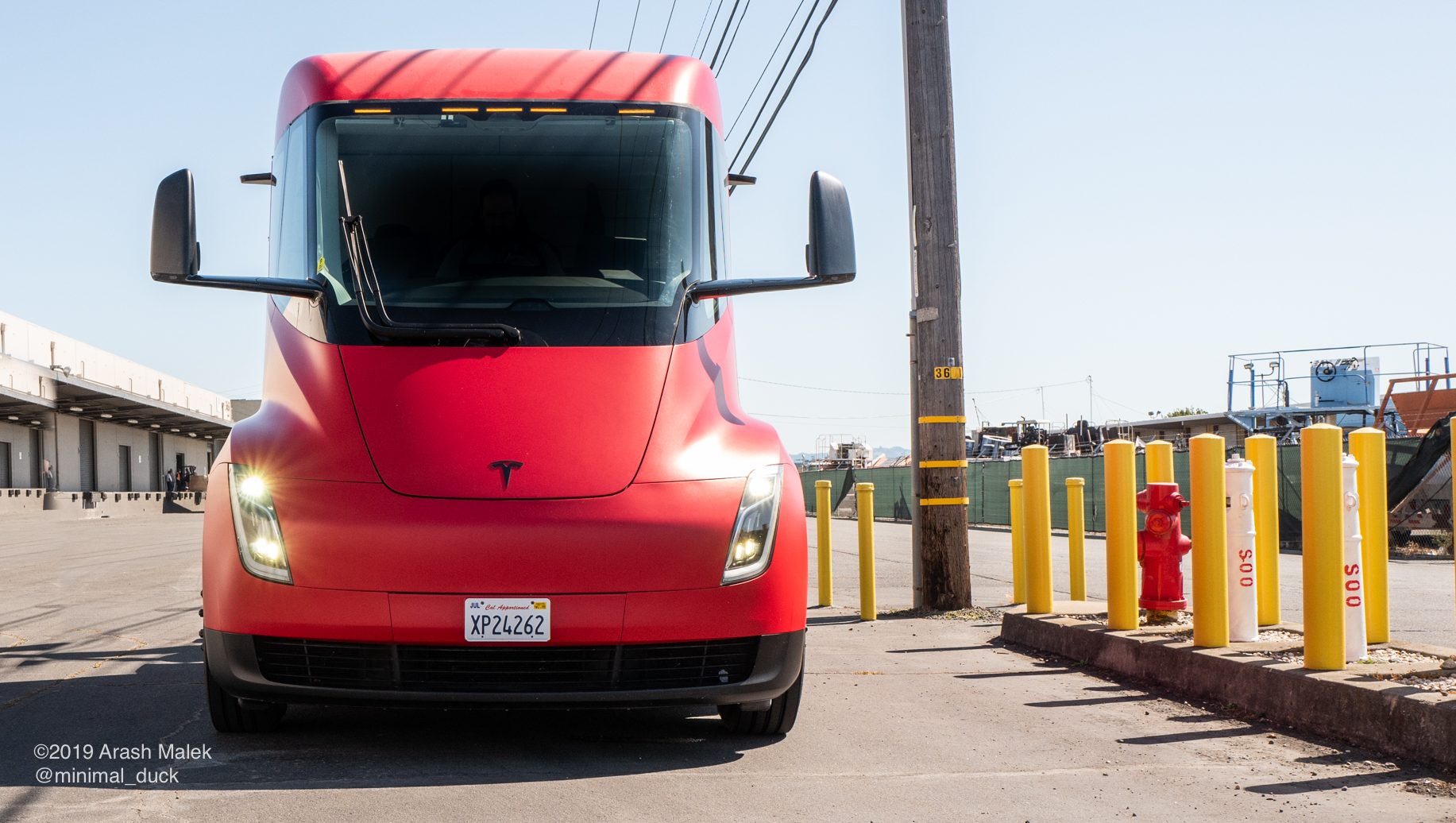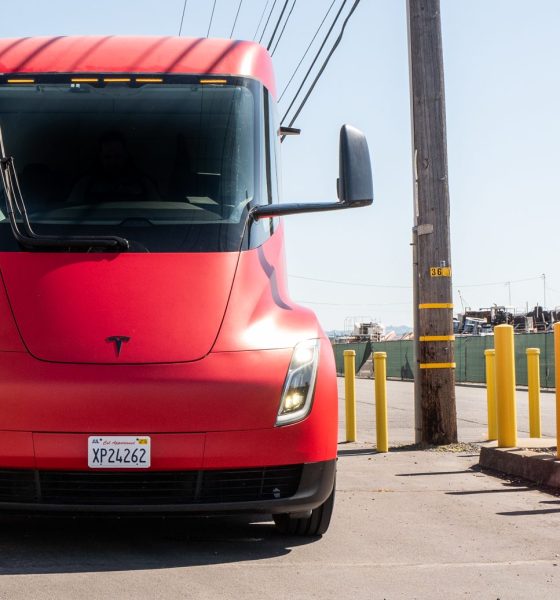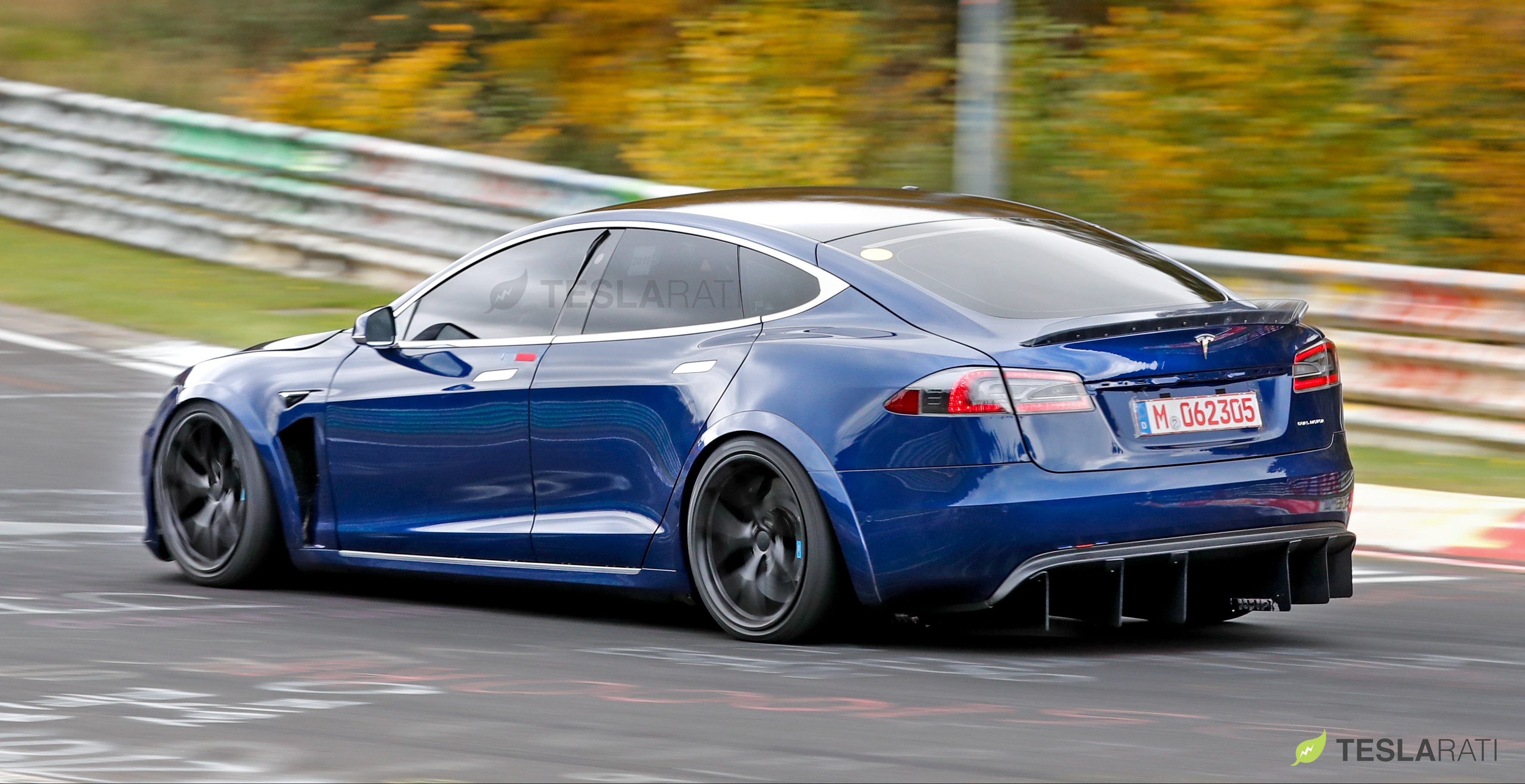

News
How Tesla’s Elon Musk dunks on the competition just as their momentum builds
It’s an emotion-filled, intense game. When you’re down the court. In the zone. Elon Musk goes up for the slam and WHAM!
Just when you least expected it.
Oh, that’s gotta hurt.
The script plays out time and time again. Tesla and SpaceX CEO Musk bursts into action. Like a runaway freight train. But with intent. Strategy. Musk charges in with a timely announcement to derail the momentum of his competition, just as they’re about to gain traction. Cheers for the competition become silence.
We were reminded of Musk’s mastery of the game this past week when a timely leaked email would inform the world that Tesla was preparing for volume production of its highly-anticipated Semi truck. Shares of Tesla shot up past $1,000 to raise the bar on its all-time high, while any trace of attention on a competing rival – Nikola – would be lost.

Electric-hydrogen commercial truck maker Nikola had just come off of a momentous week after going public in its Initial Public Offering.
While Musk’s announcement was surely a positive one for Tesla, there may have been some intent behind it. Just as Nikola’s stock began to climb, Musk derailed their momentum by announcing Tesla’s plan to prioritize the Semi truck production. It’s a classic page out of Musk’s successful playbook to leverage a competitor’s momentum, as media centers the conversation around a particular industry, before ripping the ball away from the competition and go in for the slam dunk. It has happened throughout his storied career. And it will continue to do so.
————————————
This is a preview from our weekly newsletter. Each week I go ‘Beyond the News’ and handcraft a special edition that includes my thoughts on the biggest stories, why it matters, and how it could impact the future. Please consider subscribing. It’s FREE!
————————————
Porsche Taycan. We drove it. We appreciated it and we were on the bandwagon that the Porsche Taycan and its “repeatable performance” was destined for the famed Nürburgring. It was one of the first stories I covered as a writer for Teslarati and I can remember it pretty vividly. The Taycan hit the Green Hell in Germany in August and reportedly set a track record for a four-door production vehicle. However, that story wouldn’t last long.
Not more than a couple of weeks later, on September 5, Musk announced the Model S would be arriving at the Nürburgring to test its performance at the notoriously difficult racetrack. But it surely didn’t stop there. Musk then stated that Tesla had been developing an entirely new version of the Model S behind the scenes and that the wide-body design was a brand new tri-motor setup of the company’s flagship sedan. It was called “the Plaid Powertrain,” and it ripped through the Ring in record time.

Just as Porsche was starting to gain some momentum as an EV competitor to Tesla, Musk ripped their title right out from under them. Within a few weeks, everyone was done talking about the Taycan and wanted to know more about the Plaid Model S. As of right now, it is still a car that has is relatively face-value details available, but we all know it is going to be fast.
Next, Rivian’s momentum was surely derailed by Musk when the company decided to unveil the Cybertruck. Rivian’s R1T was going to be “the next big thing” in the consumer pickup truck segment. Personally, I was pretty impressed with how many people knew about Rivian, because many friends who have little interest in the automotive sector as a whole knew who Rivian was. In California, this wouldn’t be as impressive. But I live in Pennsylvania, and it was pretty cool to hear people talk about Rivian in such a mainstream manner.
In November, Rivian had been holding more reservation events, developing its production facilities, filing patents, and really establishing itself as a real leader in the EV pickup market. Then came along the Cybertruck.
The Cybertruck’s design and its dystopian-like unveiling event were enough to derail Rivian’s momentum. Nobody was talking about Rivian, and even to this day nearly eight months later, the Cybertruck is still the hot topic. While Rivian remains a relevant character in the electric pickup truck community, the casual electric car fan is sharing articles about the Cybertruck, and not the R1T.
I’ll be honest, the space race rivalry between Musk and Bezos isn’t something I’ve followed as closely as the automotive stuff. But I remember when Bezos was on CNN in 2015 talking about his Blue Origin rockets being the first fully reusable rockets in the world. But SpaceX had successfully landed a reusable rocket in 2012. Not to mention, Musk’s words were often times reused by Bezos, who would pawn them off as his own idea. A video of that is available here.
https://youtu.be/Qe_TTI64fJA
Anyway, the proof is in the pudding. Musk has used other companies to time his announcements for groundbreaking products. He did it with the Plaid Model S, he did it with the Cybertruck, and he did it with the Semi. Momentum building is especially difficult in automotive manufacturing simply because most companies all share the same features and commonalities. It takes something truly special for people to get excited.
Elon has developed an interesting way to spread the word about his new products, and he’s basically used other companies to do it. Some might call it timely, some might call it rude. I call it smart.
—————————————————–
Please consider Subscribing and joining me next week as I go ‘Beyond the News’
—————————————————-

News
Tesla FSD fleet is nearing 7 billion total miles, including 2.5 billion city miles
As can be seen on Tesla’s official FSD webpage, vehicles equipped with the system have now navigated over 6.99 billion miles.

Tesla’s Full Self-Driving (Supervised) fleet is closing in on almost 7 billion total miles driven, as per data posted by the company on its official FSD webpage.
These figures hint at the massive scale of data fueling Tesla’s rapid FSD improvements, which have been quite notable as of late.
FSD mileage milestones
As can be seen on Tesla’s official FSD webpage, vehicles equipped with the system have now navigated over 6.99 billion miles. Tesla owner and avid FSD tester Whole Mars Catalog also shared a screenshot indicating that from the nearly 7 billion miles traveled by the FSD fleet, more than 2.5 billion miles were driven inside cities.
City miles are particularly valuable for complex urban scenarios like unprotected turns, pedestrian interactions, and traffic lights. This is also the difference-maker for FSD, as only complex solutions, such as Waymo’s self-driving taxis, operate similarly on inner-city streets. And even then, incidents such as the San Francisco blackouts have proven challenging for sensor-rich vehicles like Waymos.
Tesla’s data edge
Tesla has a number of advantages in the autonomous vehicle sector, one of which is the size of its fleet and the number of vehicles training FSD on real-world roads. Tesla’s nearly 7 billion FSD miles then allow the company to roll out updates that make its vehicles behave like they are being driven by experienced drivers, even if they are operating on their own.
So notable are Tesla’s improvements to FSD that NVIDIA Director of Robotics Jim Fan, after experiencing FSD v14, noted that the system is the first AI that passes what he described as a “Physical Turing Test.”
“Despite knowing exactly how robot learning works, I still find it magical watching the steering wheel turn by itself. First it feels surreal, next it becomes routine. Then, like the smartphone, taking it away actively hurts. This is how humanity gets rewired and glued to god-like technologies,” Fan wrote in a post on X.
News
Tesla starts showing how FSD will change lives in Europe
Local officials tested the system on narrow country roads and were impressed by FSD’s smooth, human-like driving, with some calling the service a game-changer for everyday life in areas that are far from urban centers.

Tesla has launched Europe’s first public shuttle service using Full Self-Driving (Supervised) in the rural Eifelkreis Bitburg-Prüm region of Germany, demonstrating how the technology can restore independence and mobility for people who struggle with limited transport options.
Local officials tested the system on narrow country roads and were impressed by FSD’s smooth, human-like driving, with some calling the service a game-changer for everyday life in areas that are far from urban centers.
Officials see real impact on rural residents
Arzfeld Mayor Johannes Kuhl and District Administrator Andreas Kruppert personally tested the Tesla shuttle service. This allowed them to see just how well FSD navigated winding lanes and rural roads confidently. Kruppert said, “Autonomous driving sounds like science fiction to many, but we simply see here that it works totally well in rural regions too.” Kuhl, for his part, also noted that FSD “feels like a very experienced driver.”
The pilot complements the area’s “Citizen Bus” program, which provides on-demand rides for elderly residents who can no longer drive themselves. Tesla Europe shared a video of a demonstration of the service, highlighting how FSD gives people their freedom back, even in places where public transport is not as prevalent.
What the Ministry for Economic Affairs and Transport says
Rhineland-Palatinate’s Minister Daniela Schmitt supported the project, praising the collaboration that made this “first of its kind in Europe” possible. As per the ministry, the rural rollout for the service shows FSD’s potential beyond major cities, and it delivers tangible benefits like grocery runs, doctor visits, and social connections for isolated residents.
“Reliable and flexible mobility is especially vital in rural areas. With the launch of a shuttle service using self-driving vehicles (FSD supervised) by Tesla in the Eifelkreis Bitburg-Prüm, an innovative pilot project is now getting underway that complements local community bus services. It is the first project of its kind in Europe.
“The result is a real gain for rural mobility: greater accessibility, more flexibility and tangible benefits for everyday life. A strong signal for innovation, cooperation and future-oriented mobility beyond urban centers,” the ministry wrote in a LinkedIn post.
News
Tesla China quietly posts Robotaxi-related job listing
Tesla China is currently seeking a Low Voltage Electrical Engineer to work on circuit board design for the company’s autonomous vehicles.

Tesla has posted a new job listing in Shanghai explicitly tied to its Robotaxi program, fueling speculation that the company is preparing to launch its dedicated autonomous ride-hailing service in China.
As noted in the listing, Tesla China is currently seeking a Low Voltage Electrical Engineer to work on circuit board design for the company’s autonomous vehicles.
Robotaxi-specific role
The listing, which was shared on social media platform X by industry watcher @tslaming, suggested that Tesla China is looking to fill the role urgently. The job listing itself specifically mentions that the person hired for the role will be working on the Low Voltage Hardware team, which would design the circuit boards that would serve as the nervous system of the Robotaxi.
Key tasks for the role, as indicated in the job listing, include collaboration with PCB layout, firmware, mechanical, program management, and validation teams, among other responsibilities. The role is based in Shanghai.
China Robotaxi launch
China represents a massive potential market for robotaxis, with its dense urban centers and supportive policies in select cities. Tesla has limited permission to roll out FSD in the country, though despite this, its vehicles have been hailed as among the best in the market when it comes to autonomous features. So far, at least, it appears that China supports Tesla’s FSD and Robotaxi rollout.
This was hinted at in November, when Tesla brought the Cybercab to the 8th China International Import Expo (CIIE) in Shanghai, marking the first time that the autonomous two-seater was brought to the Asia-Pacific region. The vehicle, despite not having a release date in China, received a significant amount of interest among the event’s attendees.









